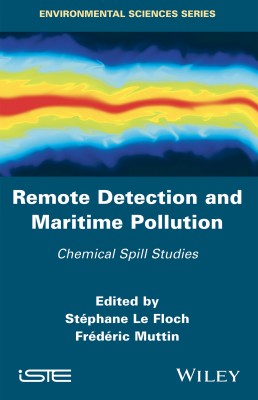
The detection of marine pollution requires a scientific and operational response to identify contaminants, chemicals and hydrocarbons, and to support contrasting observations.
Remote Detection and Maritime Pollution originates from the proceedings of CEDRE Information Day, held on October 13, 2016 in Brest, France. Containing four parts encompassing 13 chapters, this book explores remote detection channels for the multiform marine pollutions of today and of the future. With a focus on transatlantic cooperation, it covers remote detection sensors, the state of the art of maritime surveillance with regard to the interests of national and international authorities, the benefits of response strategy, and geophysical exploration. Future vectors (airplanes, drones, satellites, among others) and sensors (radar, optical, hyperspectral and so on) are also studied.
This book is a valuable resource for practical solutions for marine authorities, industries (chemical, energy, aerospace, petroleum, shipping), lawyers and scientists.
Part 1. Remote Sensing Means
1. POLLUPROOF Project, Sophie Chataing, Sébastien Angelliaume, Pierre-Yves Foucher, Eldon Puckrin and Stéphane Le Floch.
2. Multifrequency Radar Imagery and Characterization of Hazardous and Noxious Substances at Sea, Sébastien Angelliaume, Brent Minchew, Sophie Chataing, Philippe Martineau and Véronique Miegebielle.
3. Remote Sensing of HNS using Longwave Infrared Hyperspectral Imaging, Eldon Puckrin, Dennis Duro, Guillaume Gagne, Anne-Pier Bernier, Louis Armstrong and Sophie Chataing.
Part 2. Remote Sensing to Support Marine Surveillance Services
4. Customs Expertise in Remote Sensing, Laurent Buignet.
5. Remote Sensing as Evidence in Court, Yann Rabuteau.
6. Long-Term Surveillance and Monitoring of Natural Events in Coastal Waters, Francis Gohin.
Part 3. Remote Sensing to Support the Response Strategy
7. VIGISAT Ground Receiving Station and EMSA CleanSeaNet Services, Guillaume Hajduch.
8. System-to-system Interface Between the EMSA CleanSeaNet Service and OSERIT, Sébastien Legrand and Ronny Schallier.
9. Optimizing the Use of Aerial Surveillance Assets in Oil Spill Response Operations, Charles Henri Thouaille.
Part 4. Remote Sensing for Exploration
10. Potential of Imaging UAVs for Coastal Monitoring, Marion Jaud, Christophe Delacourt, Nicolas Le Dantec, Jérôme Ammann, Philippe Grandjean, Pascal Allemand and Lucie Cocquempot.
11. Use of Remote Sensing Techniques to Survey, Detect and Interpret Hydrocarbon Seeps and Spills for Exploration and Environment, Véronique Miegebielle.
12. Natural Escapes of Oil in Sedimentary Basins: Space-borne Recognition and Pairing with Seafloor and Sub-seafloor Feature, Romain Jatiault.
Stéphane Le Floch is a chemist and manager of the CEDRE Research Department in Brest, France. He is involved in the working groups MAR-ICE and GESAMP on hazardous and noxious substances for the European Maritime Safety Agency and the International Maritime Organization.
Frédéric Muttin is a Professor of Applied Mathematics in Marine Sciences at the engineering school EIGSI in La Rochelle, France. His research focuses on numerical modeling and statistical analyses. He also conducts full-scale experiments on chronic and accidental marine pollution.